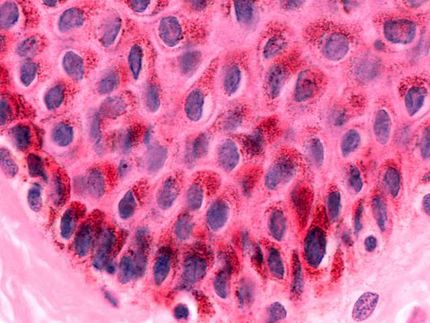HPV vaccine reduces infection, even in unvaccinated
Study shows evidence of herd protection
The HPV vaccine not only has resulted in a decrease in human papillomavirus infection in immunized teens but also in teens who were not immunized. The study is believed to be the first to show a substantial decrease in HPV infection in a community setting as well as herd protection – a decrease in infection rates among unimmunized individuals that occurs when a critical mass of people in a community is immunized against a contagious disease. The Cincinnati Children's Hospital Medical Center study is published in Pediatrics.
"Infection with the types of HPV targeted by the vaccine decreased in vaccinated young women by 69 percent," says Jessica Kahn, MD, MPH, a physician in the division of Adolescent Medicine at Cincinnati Children's and lead author of the study. "Two of these HPV types, HPV-16 and HPV-18, cause about 70 percent of cervical cancer. Thus, the results are promising in that they suggest that vaccine introduction could substantially reduce rates of cervical cancer in this community in the future."
The first HPV vaccine was licensed for use in the United States in June 2006. The U.S. Advisory Committee on Immunization Practices has recommended vaccination of girls and women between the ages of 11 and 26 to reduce rates of HPV infection, which ultimately can lead to cervical cancer.
In 2006 and 2007, Dr. Kahn and colleagues at Cincinnati Children's recruited 368 young women between the ages of 13 and 16 from two primary care clinics in the city of Cincinnati. The young women had sexual contact but none were vaccinated. In 2009 and 2010, they recruited a different group of 409 young women in the same age range, more than half of whom had received at least one dose of the vaccine. The researchers compared pre- and post-vaccination HPV prevalence rates.
The prevalence of vaccine-type HPV decreased 58 percent overall, from 31.7 percent to 13.4 percent. The decrease was high among vaccinated participants (69 percent), but also was substantial for those who were unvaccinated (49 percent).
Dr. Kahn says the decrease in vaccine-type HPV among vaccinated participants was "especially remarkable," given that participants were sexually experienced, many were exposed to vaccination-type HPV before vaccination, and only one dose of the vaccine was required to be considered vaccinated.
Dr. Kahn emphasizes that despite the evidence of herd immunity demonstrated in her study, vaccination of all young women between the ages of 11 and 26 is important to maximize the health benefits of vaccination.
Other news from the department science

Get the life science industry in your inbox
By submitting this form you agree that LUMITOS AG will send you the newsletter(s) selected above by email. Your data will not be passed on to third parties. Your data will be stored and processed in accordance with our data protection regulations. LUMITOS may contact you by email for the purpose of advertising or market and opinion surveys. You can revoke your consent at any time without giving reasons to LUMITOS AG, Ernst-Augustin-Str. 2, 12489 Berlin, Germany or by e-mail at revoke@lumitos.com with effect for the future. In addition, each email contains a link to unsubscribe from the corresponding newsletter.
Most read news
More news from our other portals
Last viewed contents
Recipharm and Astimex Pharma form new development and manufacturing collaboration
Rabson-Mendenhall_syndrome



















































